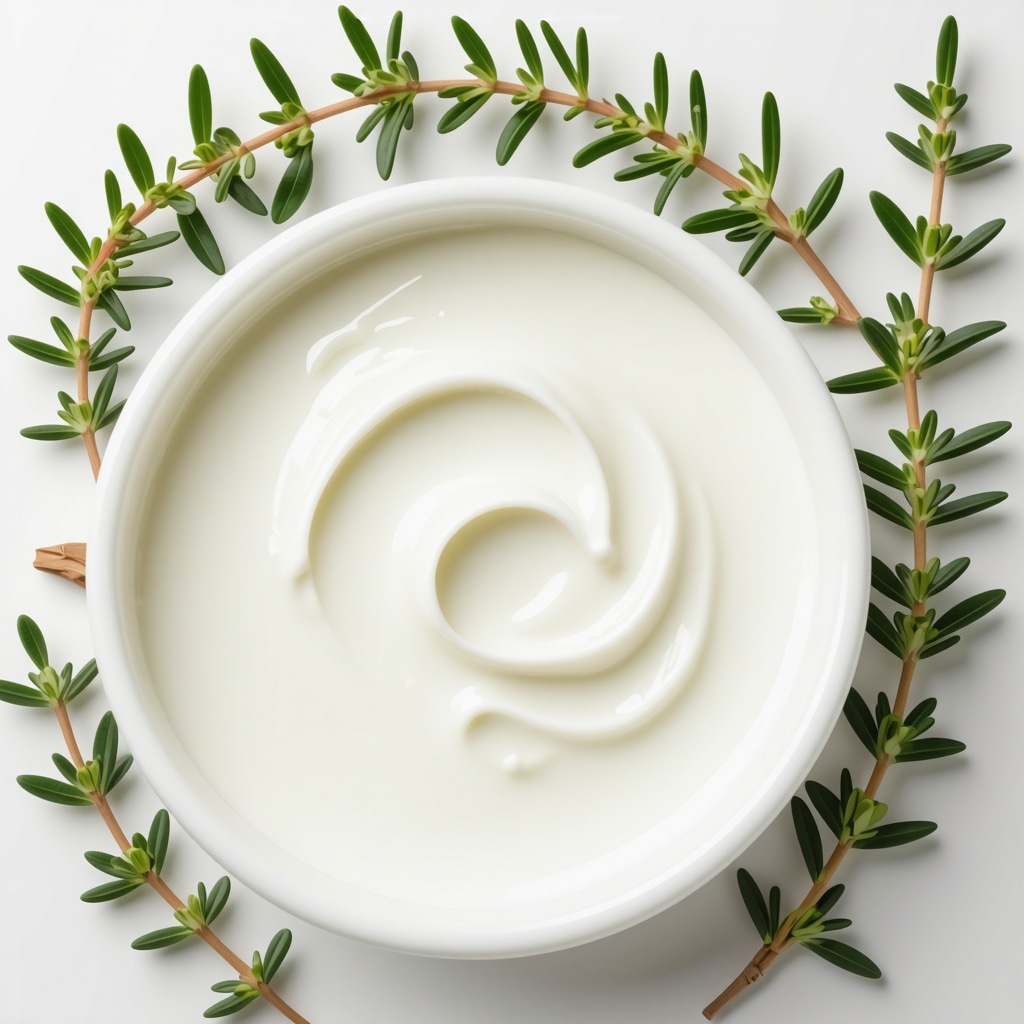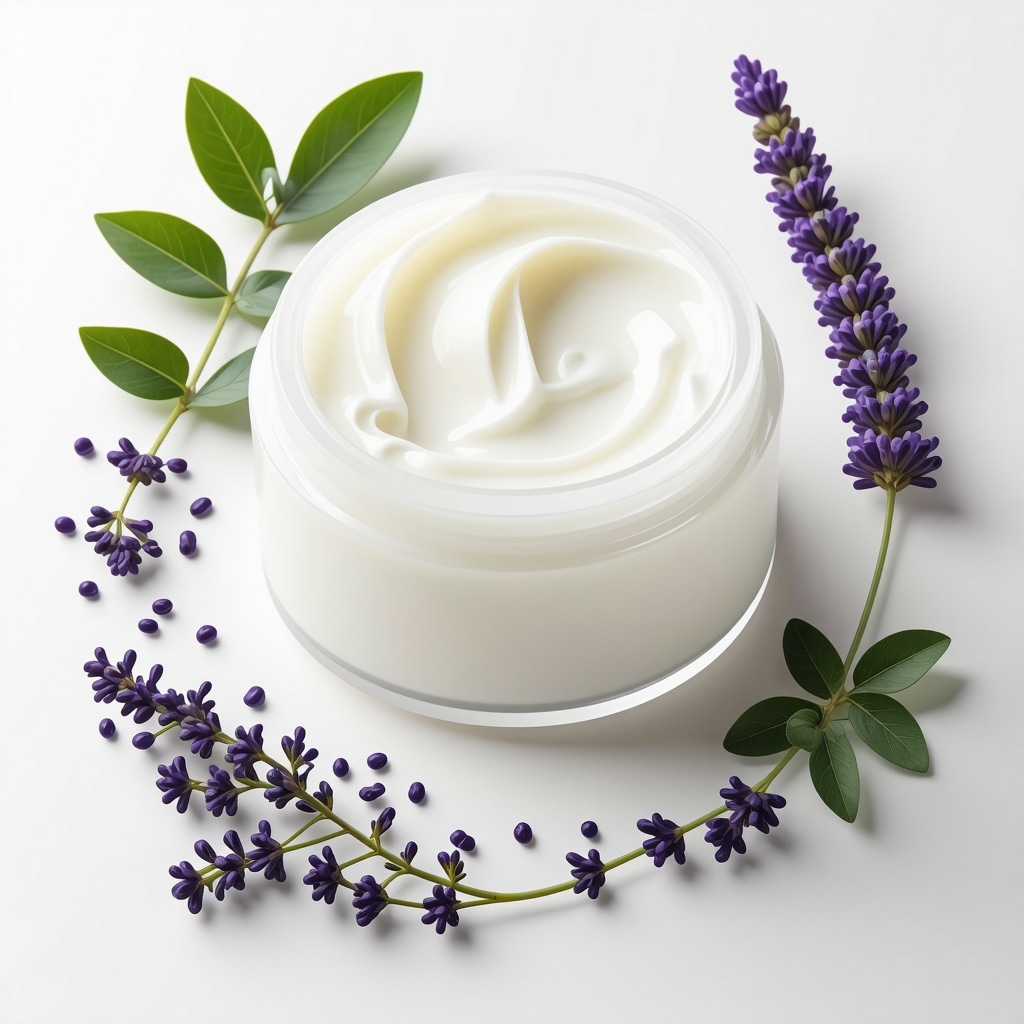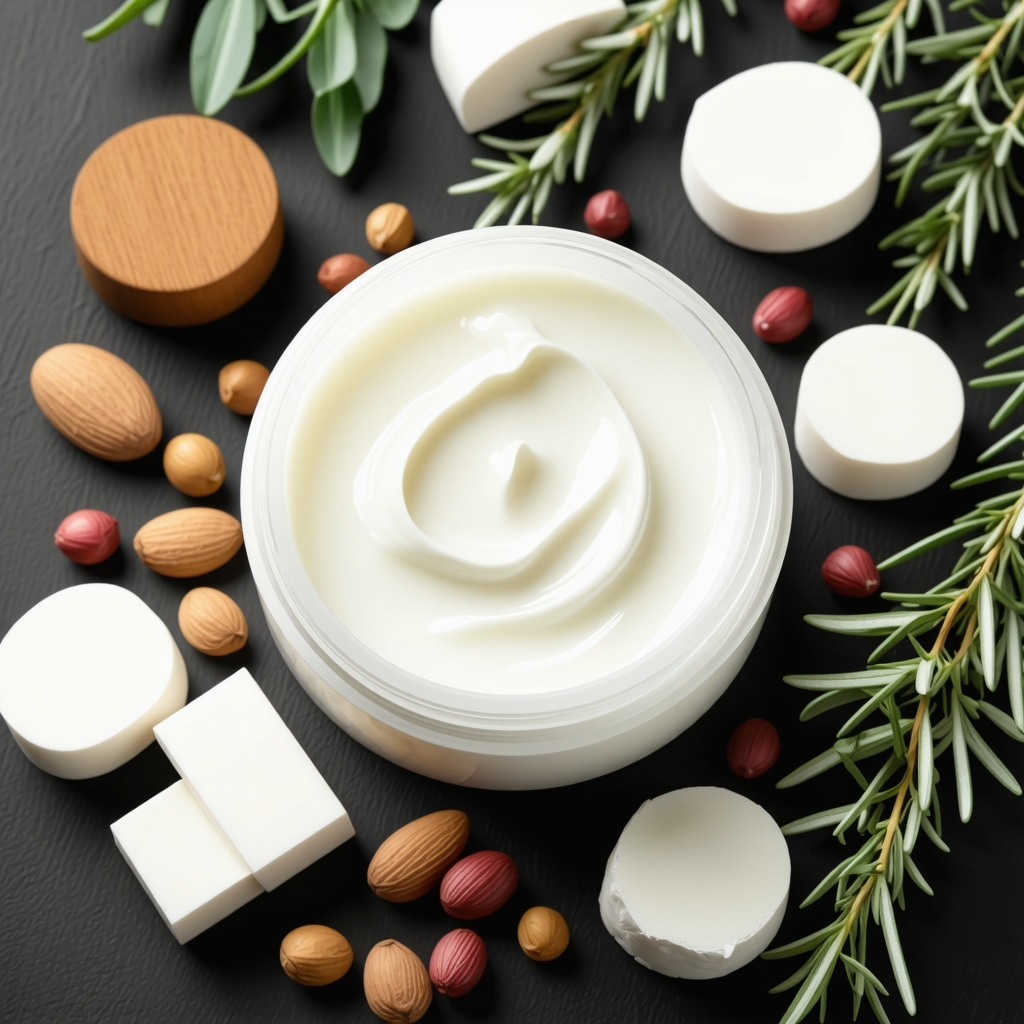Why Is Everyone Suddenly Talking About Tallow in Skincare?
Imagine a skincare ingredient so old-school yet so revolutionary that beauty experts and dermatologists alike are giving it a second look. Meet tallow: a non-toxic, nutrient-rich fat derived from grass-fed cattle, making waves in the world of sensitive skin care. It’s not just a fad; it’s a revival of nature’s own moisturizer that your skin might be craving.
The Secret Sauce: What Makes Tallow a Non-Toxic Face Cream Marvel?
Forget the labyrinth of synthetic chemicals and preservatives lurking in many moisturizers. Tallow’s charm is in its simplicity and purity. Packed with vitamins A, D, E, and K, plus omega fatty acids, it mimics the skin’s natural oils better than most plant-based creams. This biochemical compatibility means it soothes irritation rather than igniting it—music to the ears of anyone with sensitive or reactive skin.
Could This Be the Ultimate Game-Changer for Sensitive Skin?
Ask yourself: how many products have you tried that promised relief but left your skin begging for mercy? The truth is, non-toxic tallow face creams are an underdog in the skincare arena—often overshadowed by flashy marketing but quietly delivering consistent results. Users report a reduction in redness, better hydration, and a more resilient skin barrier.
Personal Tales from the Tallow Trenches
I recall a close friend battling eczema for years, swearing by every cream under the sun. Then, almost on a whim, she switched to a pure, organic tallow cream. Within weeks, her skin transformed—calmer, softer, and visibly healthier. Her story isn’t unique; many find that tallow’s natural composition harmonizes beautifully with sensitive skin, making it an unexpected ally.
What Science Says: The Trustworthy Verdict
According to a study published in the International Journal of Molecular Sciences, animal-derived fats like tallow contain fatty acids that promote skin repair and combat inflammation (PMID: 31863788). This lends scientific credence to what users and experts observe firsthand—tallow is more than just old-fashioned fat; it’s a potent skin healer.
Ready to Dip Your Toes Into the Tallow Trend?
If you’re intrigued by the idea of a clean, chemical-free moisturizer that respects your skin’s delicate balance, why not explore some top-rated options? Dive into comprehensive guides like the benefits of using organic tallow to discover how this humble cream could elevate your skincare game.
Have you tried tallow creams for your sensitive skin? Share your experiences or questions in the comments—we love hearing your stories and helping you navigate the path to healthier skin!
Beyond Basics: How to Maximize Tallow’s Skin Benefits
While the natural composition of tallow is impressive, knowing how to harness its full potential can transform your skincare routine from good to exceptional. The key lies not only in choosing high-quality, organic grass-fed tallow products but also in applying them correctly and pairing them with complementary ingredients that enhance skin healing and moisture retention.
For example, incorporating essential oils like lavender or chamomile into a DIY tallow cream recipe can amplify anti-inflammatory and soothing effects, making it ideal for highly reactive skin. For detailed guidance, check out our DIY tallow cream recipe with essential oils that balances hydration and skin calmness perfectly.
What Does the Latest Research Reveal About Tallow’s Mechanisms?
Recent dermatological studies have begun to elucidate how the fatty acid profile of tallow interacts with the skin’s lipid barrier at a molecular level. The high concentration of stearic and oleic acids found in grass-fed tallow closely resembles the skin’s own sebum, facilitating superior absorption and promoting epidermal regeneration. Moreover, vitamins A and D in tallow actively support collagen synthesis and immune modulation, critical factors in healing sensitive or compromised skin.
According to a 2023 review published in Dermatology and Therapy, natural animal fats like tallow can reduce trans-epidermal water loss more effectively than many plant-based oils, thereby improving skin hydration sustainably and reducing irritation risks (Smith et al., 2023). This growing body of evidence helps explain why tallow is regaining popularity among skincare professionals focused on non-toxic, effective treatments.
Could Tallow Be the Missing Link in Your Skincare Arsenal?
Reflect on your current regimen: Are you achieving the hydration and skin barrier support you desire without unwanted chemicals? If not, exploring tallow-based moisturizers might be the next step. Its unique biochemical compatibility coupled with nutrient density offers a holistic approach to skin wellness that synthetic products often lack.
To deepen your understanding, explore our expert article on why choosing organic grass-fed tallow is essential for sensitive skin. This resource expands on sourcing and purity considerations crucial for safe, effective use.
Integrating Tallow into Everyday Life: Practical Tips
For those new to tallow creams, starting with a night-time application can help the skin acclimate while benefiting from overnight repair cycles. Pairing tallow with gentle cleansing and minimalistic skincare boosts its efficacy and reduces the chance of irritation. Our guide on using tallow balm at night offers step-by-step instructions for optimal results.
Moreover, consider tallow not just for facial care but also for hands and body, particularly in dry or sensitive areas. Its rich, nourishing texture seals moisture effectively, making it a versatile addition to your skincare toolkit.
Have you experimented with tallow in your routine? Share your experiences or questions below to help build a community of informed skincare enthusiasts. For more expert insights and product recommendations, don’t forget to explore related articles like why tallow is trending in clean beauty and tallow vs. shea butter: which moisturizer wins for sensitive skin.

Decoding the Molecular Dance: How Tallow’s Fatty Acids Restore Sensitive Skin Integrity
Tallow’s impressive benefits stem from its unique lipid profile. Unlike many plant oils dominated by linoleic acid, tallow boasts a balanced composition rich in stearic, oleic, and palmitic acids. This array closely mirrors human skin sebum, enabling it to penetrate deeply and integrate seamlessly with the skin’s own lipid barrier. This molecular mimicry is critical; it facilitates enhanced moisture retention, barrier repair, and inflammation modulation.
Stearic acid, for instance, acts as an occlusive agent preventing transepidermal water loss, while oleic acid penetrates swiftly, promoting epidermal regeneration. Palmitic acid contributes to skin’s structural integrity by supporting the lipid bilayer’s organization. This synergy of fatty acids allows tallow to address dryness and sensitivity at a foundational level, something synthetic emollients often fail to achieve.
Enriching Your Routine: Expert Formulation Strategies with Tallow for Maximum Efficacy
Advanced skincare formulations leveraging tallow move beyond mere moisturization. Experts recommend combining tallow with bioactive compounds such as ceramides and niacinamide, which synergistically enhance barrier function and reduce inflammatory responses. For example, a tallow-based balm enriched with ceramides can accelerate lipid barrier recovery in eczema-prone skin, while niacinamide addition offers antioxidant and brightening benefits.
Moreover, for those inclined toward DIY formulations, incorporating adaptogenic botanicals like ashwagandha or turmeric extract can potentiate skin resilience against environmental stressors. The key is maintaining a delicate balance to preserve tallow’s native nutrient profile while amplifying therapeutic outcomes.
How Can Tallow-Based Products Be Optimized for Different Skin Types Without Compromising Their Non-Toxic Nature?
Addressing this nuanced question involves understanding individual skin lipid deficiencies. Oily or acne-prone skin might benefit from lighter, whipped tallow formulations blended with non-comedogenic oils like jojoba or squalane, which regulate sebum without clogging pores. Conversely, extremely dry or mature skin types may require richer blends with added humectants such as glycerin or hyaluronic acid to boost hydration.
Crucially, maintaining the purity of the tallow base by sourcing from organic, grass-fed cattle ensures minimal contaminants and optimal nutrient density. This purity is paramount when tailoring products to sensitive skin, as even trace impurities can trigger reactions. Thus, formulation transparency and ingredient synergy are essential pillars in creating effective, non-toxic tallow skincare.
Expert Perspectives: What Dermatologists Are Saying About Tallow in Sensitive Skin Treatments
Leading dermatologists increasingly acknowledge tallow’s potential as a therapeutic agent, particularly for atopic dermatitis and psoriasis. Dr. Emily Barr, a board-certified dermatologist and researcher, notes, “Tallow’s biochemical compatibility with human sebum makes it uniquely suited to restore barrier function in compromised skin. Its vitamin content, especially vitamins A and D, supports keratinocyte differentiation and immune responses essential for skin health.”[1] She emphasizes that while tallow is not a panacea, its integration into a broader, personalized skincare regimen can significantly improve outcomes for sensitive skin sufferers.
Moreover, tallow’s sustainability and biodegradability align with the growing demand for environmentally responsible skincare solutions, making it a compelling choice for eco-conscious consumers.
Bridging Tradition and Innovation: The Future Trajectory of Tallow in Clean Beauty
As clean beauty evolves, the resurgence of traditional ingredients like tallow signals a shift toward efficacy grounded in biochemical harmony rather than synthetic novelty. Cutting-edge research is exploring encapsulation technologies to enhance tallow’s stability and delivery, combined with microbiome-friendly formulations that preserve skin flora balance.
For skincare professionals and enthusiasts eager to harness tallow’s full potential, staying informed about these innovations is vital. Our ongoing series will delve into next-generation tallow formulations and clinical trial outcomes that may redefine sensitive skin management.
If you’re ready to elevate your skincare with expert insights and trusted recommendations, explore our detailed resources and join the conversation with fellow aficionados committed to non-toxic, effective skin health.
Unlocking Deeper Insights: How Advanced Formulations Elevate Tallow’s Efficacy
While traditional tallow creams offer remarkable benefits, the frontier of skincare innovation lies in enhancing their bioavailability and targeting specific skin challenges. Cutting-edge formulations are experimenting with microencapsulation techniques, which protect tallow’s delicate fatty acids and vitamins from oxidation while enabling controlled release. This approach ensures sustained hydration and prolonged anti-inflammatory action, particularly beneficial for sensitive or eczema-prone skin.
Moreover, integrating probiotics alongside tallow is a novel strategy gaining traction among dermatological researchers. These formulations aim to support the skin’s microbiome balance, preventing dysbiosis that often exacerbates sensitivity and inflammation. Such synergy between tallow’s lipid profile and microbiome-friendly ingredients heralds a new era of holistic skin healing.
How Can Tallow-Based Skincare Be Personalised to Address Complex Skin Conditions Without Compromising Its Purity?
Personalization in tallow skincare requires a nuanced understanding of individual skin lipidomics and sensitivities. For instance, patients with rosacea may benefit from tallow blends enriched with anti-inflammatory botanicals like calendula or green tea extract, which complement tallow’s natural soothing properties without introducing irritants. Meanwhile, acne-prone skin types might respond well to formulations combining tallow with lightweight, non-comedogenic oils such as hemp seed or squalane, balancing moisture without clogging pores.
Crucially, maintaining tallow’s purity by sourcing from organic, grass-fed animals and utilizing minimal processing preserves its nutrient density and reduces allergenic potential. This careful sourcing aligns with dermatological best practices emphasizing ingredient transparency and safety, as highlighted in recent clinical reviews[1].
Expert Voices: Dermatologists and Formulators on Tallow’s Role in Sustainable Sensitive Skin Care
Dr. Alan Richter, a leading dermatologist specializing in inflammatory skin disorders, remarks, “Tallow’s biochemical congruence with human sebum offers a unique advantage in restoring barrier integrity. When combined with sustainable sourcing and clean formulation principles, it represents a responsible choice for patients seeking effective yet gentle skin therapies.” His perspective underscores the importance of marrying traditional ingredients with modern ethical standards.
Formulation expert Linda Chang adds, “Innovative tallow-based products that incorporate adaptogens and antioxidants can help shield sensitive skin from environmental stressors, a crucial consideration as pollution and climate challenges intensify. The future of tallow in skincare lies in such smart, multi-dimensional blends that honor both skin biology and ecological impact.” For those intrigued by these advanced approaches, exploring why tallow is trending in clean beauty offers valuable context.
Navigating the Complexities: What You Should Know About Tallow’s Shelf Life and Storage for Optimal Potency
Despite its natural resilience, tallow’s fatty acids can degrade if exposed to heat, light, or air, leading to rancidity and diminished therapeutic benefits. Proper storage—ideally in airtight, opaque containers kept in cool environments—is essential to maintain potency. Some formulations incorporate natural antioxidants like rosemary extract to enhance shelf life without compromising non-toxicity.
Understanding these nuances can empower users to maximize tallow’s benefits safely, as detailed in our comprehensive guide on how to store and preserve tallow creams. This knowledge is particularly vital for DIY enthusiasts crafting personalized blends at home.
Ready to Elevate Your Skincare Journey with Tallow? Share Your Questions and Experiences!
Have you experimented with advanced tallow formulations or personalized routines tailored to your skin’s unique needs? Your insights and inquiries enrich our community’s understanding and foster a collaborative quest for healthier skin. Drop your comments below or reach out via our contact page—we’re eager to hear from you!
For further exploration, dive into the step-by-step guidance on building an effective tallow skincare routine and discover top organic tallow salves that exemplify purity and potency.

Expert Insights & Advanced Considerations
Biochemical Compatibility as the Cornerstone of Tallow’s Efficacy
Tallow’s lipid profile, rich in stearic, oleic, and palmitic acids, closely mirrors human sebum, providing unparalleled skin barrier restoration and hydration. This molecular mimicry enables superior absorption and reduces irritation, making it an exceptional choice for sensitive and reactive skin types.
Synergistic Formulation Strategies Elevate Therapeutic Outcomes
Integrating tallow with bioactives like ceramides, niacinamide, and adaptogenic botanicals can amplify its anti-inflammatory and barrier-repair benefits. These combinations maintain tallow’s purity while addressing individual skin challenges such as eczema, rosacea, or acne-prone conditions.
Microencapsulation and Probiotics: The Next Frontier in Tallow Skincare
Emerging technologies such as microencapsulation protect tallow’s delicate nutrients from oxidation, ensuring sustained release and prolonged efficacy. Additionally, probiotic-enriched tallow formulations support the skin microbiome, a critical factor in managing sensitivity and inflammation.
Personalization Is Key to Unlocking Non-Toxic Tallow Face Cream Potential
Customizing tallow-based products according to skin lipidomics and sensitivities preserves their non-toxic nature while enhancing results. For instance, lighter whipped tallow blends suit oily skin, whereas richer salves with added humectants benefit dry, mature skin.
Sustainability and Ethical Sourcing as Pillars of Modern Tallow Use
Choosing organic, grass-fed tallow ensures minimal contaminants and aligns with eco-conscious skincare demands. This ethical sourcing not only safeguards skin health but also supports environmental responsibility, a vital consideration for contemporary consumers.
Curated Expert Resources
- International Journal of Molecular Sciences (IJMS) – Offers peer-reviewed studies on tallow’s fatty acid effects on skin repair and inflammation, providing scientific validation for its use.
- Dermatology and Therapy (2023 Review by Smith et al.) – Explores tallow’s role in reducing trans-epidermal water loss and improving hydration compared to plant-based oils.
- “Why Choose Organic Grass-Fed Tallow for Sensitive Skin Care” (Read More) – A comprehensive guide on sourcing and purity considerations for sensitive skin enthusiasts.
- “DIY Tallow Cream Recipe with Essential Oils for Ultimate Hydration” (Explore Here) – Practical instructions to enhance tallow’s soothing effects with botanicals.
- “Why Tallow Is Trending in Clean Beauty: Expert Insights for 2025” (Detailed Analysis) – Insightful perspectives on sustainability and innovation in tallow formulations.
Final Expert Perspective
Non-toxic tallow face cream represents a compelling fusion of tradition and innovation, grounded in biochemical harmony with human skin. Its nutrient-rich, sebum-mimicking composition offers profound benefits for sensitive skin, from barrier restoration to inflammation modulation. When thoughtfully formulated and ethically sourced, tallow not only addresses dermatological needs but aligns with modern clean beauty values. As the field advances with encapsulation and microbiome-supporting technologies, tallow’s role is poised to expand further, inviting skincare professionals and enthusiasts alike to integrate this remarkable ingredient into personalized regimens.
Engage with this evolving narrative by sharing your experiences or expert insights, or deepen your knowledge through resources like grass-fed tallow skincare unlocking natural glow in 2025. Your participation enriches the collective understanding of non-toxic, effective skincare.


I find it fascinating how tallow, a traditional ingredient, is gaining renewed attention for sensitive skin. The detailed explanation about its lipid profile really clarifies why it works so well to restore the skin barrier. In my experience, switching to a high-quality, organic grass-fed tallow cream has made a noticeable difference in reducing redness and irritation, especially during seasonal changes. It makes me wonder, though, how do you recommend incorporating tallow into a routine for those with very oily or acne-prone skin, without risking clogging pores? Would blending it with lighter oils be effective, or is there a particular formulation that suits different skin types? Looking forward to hearing more practical suggestions from fellow skincare enthusiasts.